- US futures struggle
- Europe opened higher after advancing for 7 consecutive weeks
- Dollar slump boosts gold
Key Events
European stocks opened higher on Monday, while US futures on the Dow, S&P, NASDAQ and Russell 2000 struggled as traders consider the path to global economic recovery while closely watching US earnings. The slump in yields, which started the recent bullish bout, is making us question whether there is another trend emerging.
Bitcoin recovered after sliding back under $55,000 over the weekend, after its all-time high last week.
Global Financial Affairs
At the time of writing, futures were all in the red with contracts on the NASDAQ 100 just marginally lower, while contacts on the S&P 500 and Dow retreated even more steeply after all three indices rosing for four weeks in a row.
Contracts on the Russell 2000 are underperforming significantly. As such the week seems to be starting off with a retreat on last week’s reflation trade.
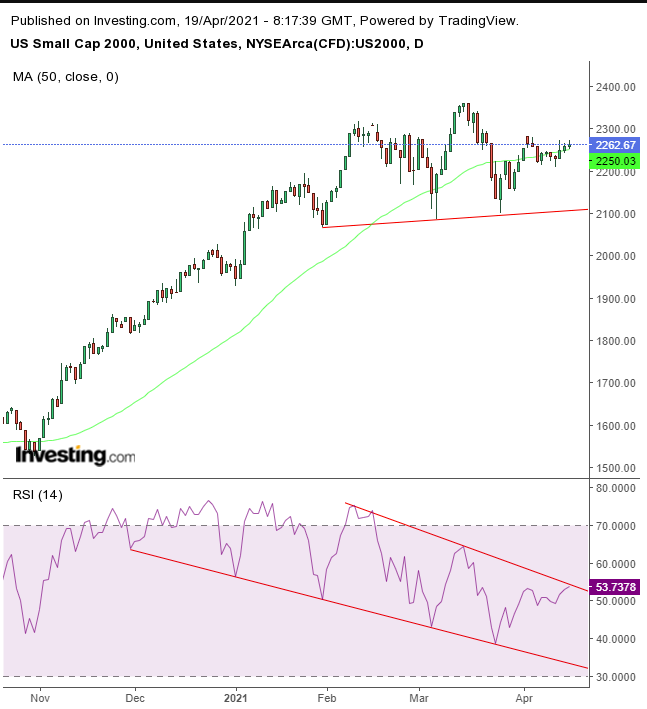
The small cap index continued to languish in what may still prove to be a H&S top, while the RSI has been providing a negative divergence. A downside breakout of the pattern’s neckline —the trendline that connects the lows—will complete a reversal.
European shares on the STOXX 600 added to seven weeks of straight gains.
Traders in Asia weren’t any more decisive than their global counterparts, with all but one index flat. China’s Shanghai Composite outperformed amid easing concerns about the health of state enterprise China Huarong Asset Management (HK:2799), a distressed-debt manager. On Friday, China’s financial regulator, in its first official comment since the company missed the deadline to report earnings, said that Huarong had ample liquidity. The statement reduced fears of financial contagion and drove a rally in Huarong bonds.
Strong US and China economic numbers offset concerns about the ongoing spread of coronavirus variants—total new infections for the last seven days topped 5.2 million, the most in a single week since the pandemic started—boosting the MSCI All-Country World Equity Index to a new all-time high last week.
Nevertheless, whether because of a virus that just won’t go away, or vaccines that are not rolling out fast enough to people around the world, or ongoing Fed promises of not raising rates, the Treasury yield has been falling. Given that rising yields started the equity recent rally, it is possible that equities will pull back for as long as yields drop.
Blue-chip companies reporting later today include The Coca-Cola Company (NYSE:KO) at 6.55am ET, IBM (NYSE:IBM) at 4.15pm ET and United Airlines Holdings (NASDAQ:UAL) AT 5pm ET.
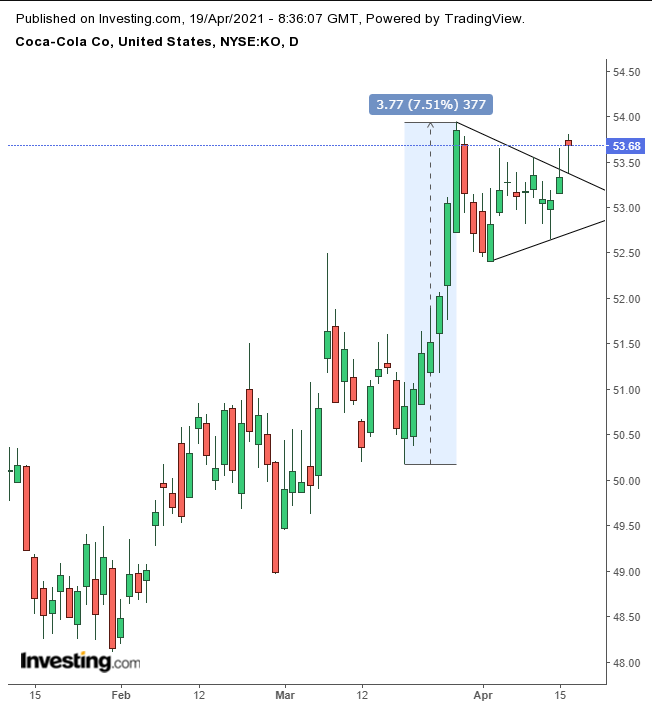
While Coca Cola closed a hammer on Friday, which is potentially bearish, it completed a pennant, targeting the $58 level.
IBM appeared last week to have blown its pennant, along with the RSI completing a H&S top in momentum.
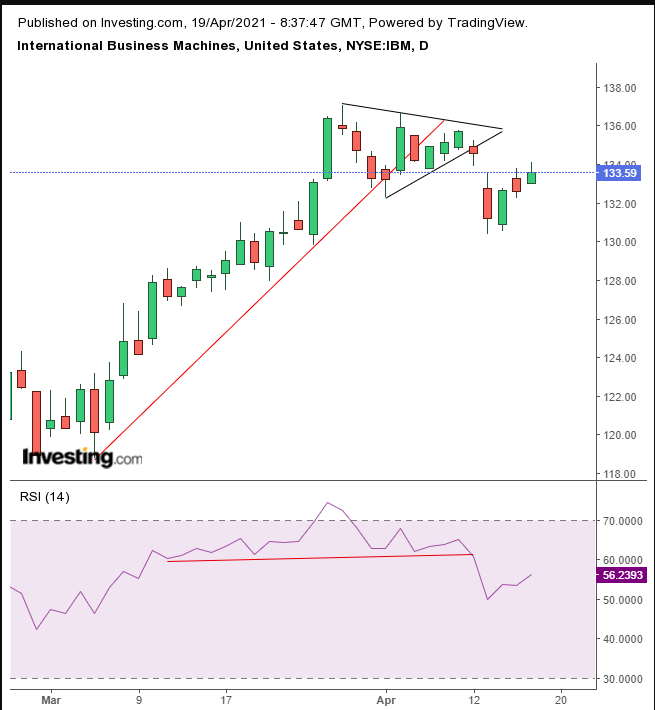
It seems investors are expecting to be disappointed in earnings.
United Airlines has been trading along a H&S top with the RSI demonstrating a negative divergence with momentum.
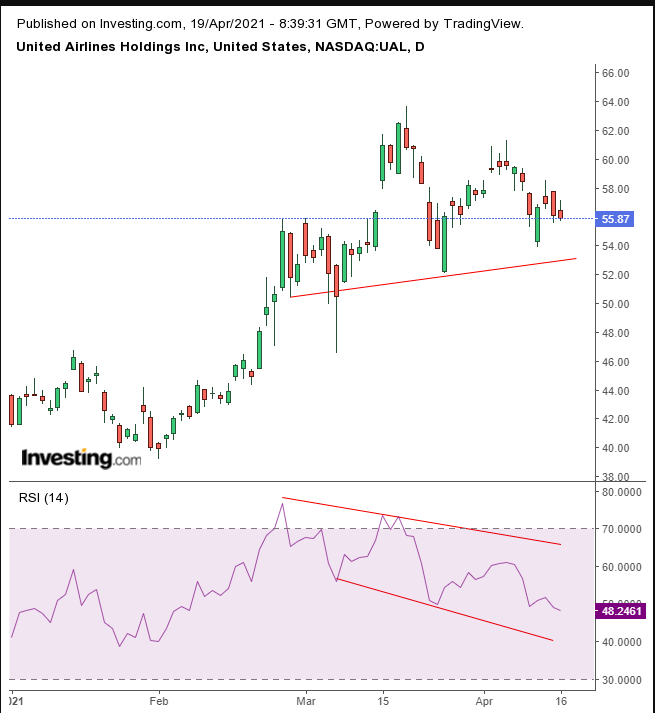
The pattern suggests inherent weakness.
Yields on the 10-year Treasury note completed a top, after falling out of a steeper rising channel since January. Rates recently slipped below their 50 DMA.
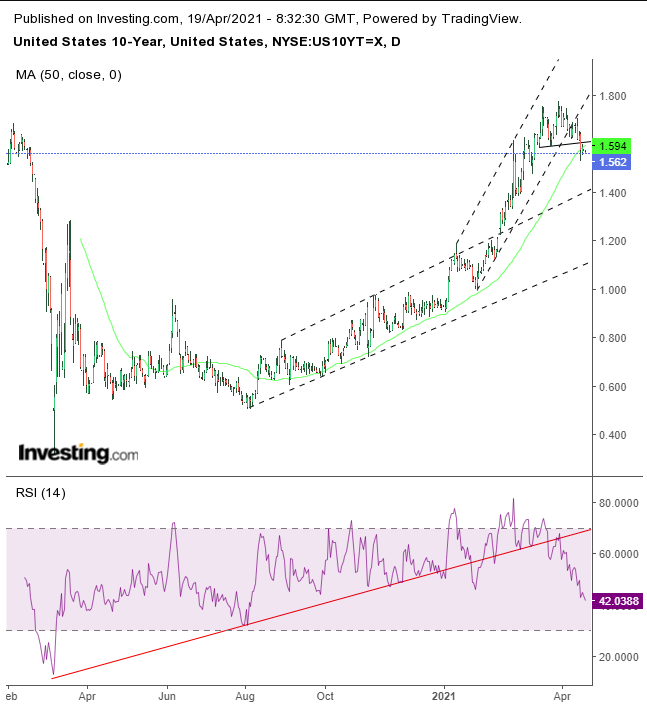
The RSI predicted all this when it slipped below its own uptrend ahead of time.
The dollar crashed through an important support, resuming a the fall that follows the rising, bearish wedge.
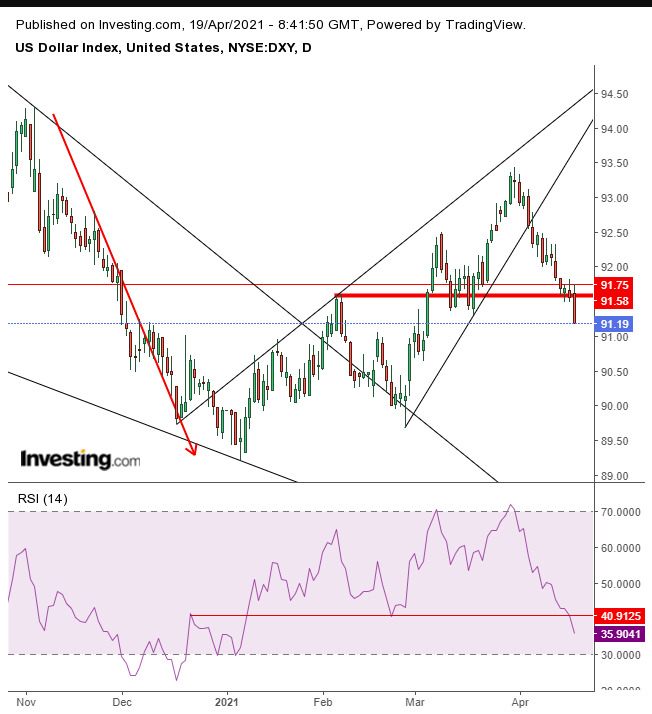
The RSI supported the drop with the breaking of its own major support. However, unless the dollar breaks to a new low below the Jan. 6 bottom, we maintain our long-term bullish view, due to the preceding falling wedge since the March peak.
Naturally, gold pushed higher, after completing a double bottom. However, the RSI is testing the top of its falling channel, mirroring the price’s falling channel, as if to say that momentum may have run out and the price won’t get as far as the channel top.
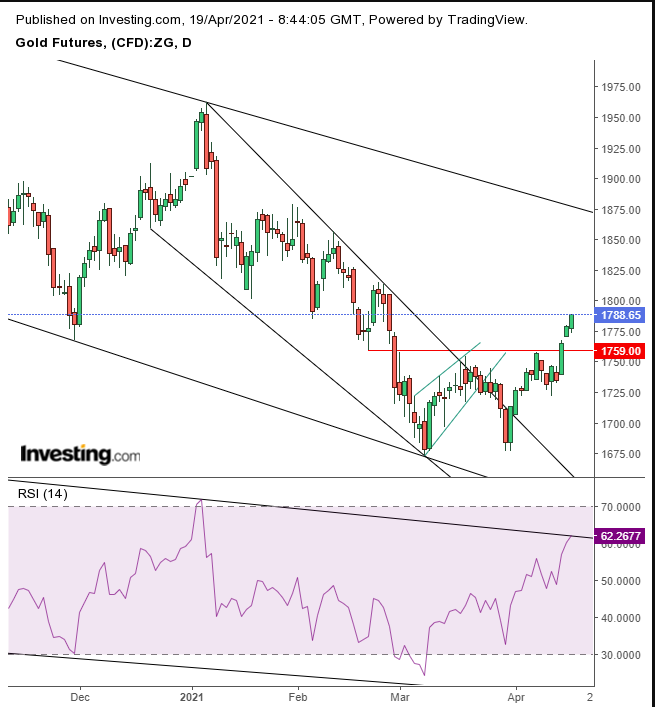
While the precious metal did complete a small double bottom, blowing out a rising, bearish flag, it is still in a falling channel since the March peak.
Bitcoin seemed to have found its footing after falling the most since February over the weekend, rebounding slightly.
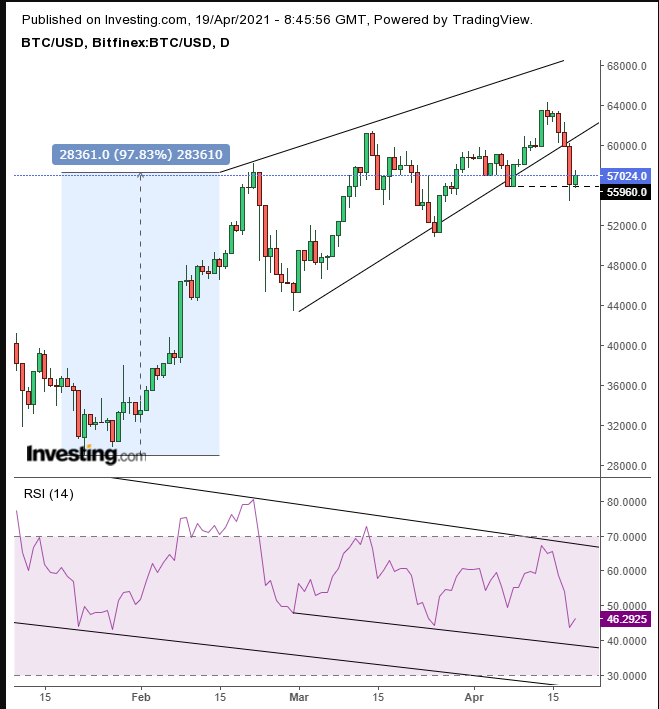
However, after completing the rising wedge, we expect it to retest the February low at the mid-$40,000 level.
Oil edged higher ahead of Wednesday's inventory report as bulls bank on strong US demand.

Technically, the price was stuck for the fourth day slightly atop a range, still below the left shoulder of a potential H&S top. The RSI provided a negative divergence.
Up Ahead
- Apple's (NASDAQ:AAPL) first new product release of the year occurs on Tuesday.
- Also on Tuesday, Procter & Gamble (NYSE:PG) reports Q3 2021 results
- The Reserve Bank of Australia releases minutes of its policy meeting on Tuesday.
- On Thursday the European Central Bank announces its rate decision and President Christine Lagarde is holding a briefing.
- On Friday the US manufacturing and services purchasing managers indexes are published.
Market Moves
Stocks
- Futures on the S&P 500 Index declined 0.1%.
- The STOXX 600 Index rose 0.1%.
- The MSCI Asia Pacific Index increased 0.1%.
- The MSCI Emerging Markets Index was little changed.
Currencies
- The Dollar Index plunged 0.4%.
- The euro was little changed at $1.1982.
- The British pound rose 0.1% to $1.3849.
- The onshore yuan strengthened 0.1% to 6.516 per dollar.
- The Japanese yen strengthened 0.3% to 108.48 per dollar.
Bonds
- The yield on 10-year Treasuries fell two basis points to 1.56%.
- The yield on two-year Treasuries decreased less than one basis point to 0.16%.
- Germany’s 10-year yield dipped less than one basis point to -0.27%.
- Britain’s 10-year yield fell one basis point to 0.756%.
- Japan’s 10-year yield declined one basis point to 0.088%.
Commodities
- West Texas Intermediate crude dipped 0.3% to $62.96 a barrel.
- Brent crude decreased 0.3% to $66.54 a barrel.
- Gold strengthened 0.2% to $1,780.37 an ounce.
